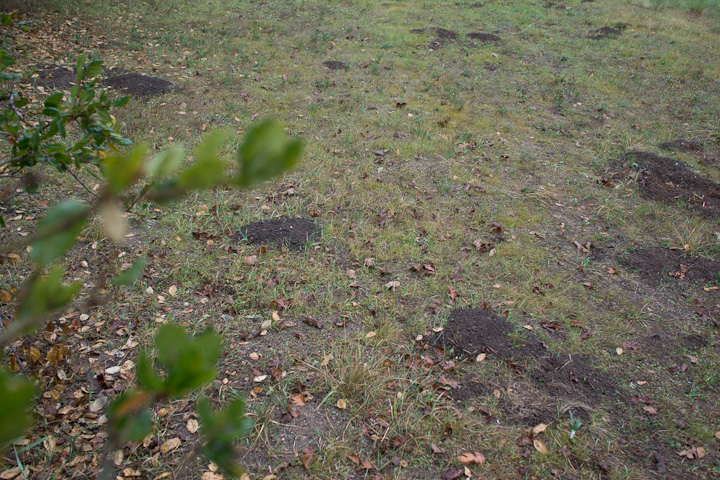I’ve read a few complaints about the NEX-7’s autofocus performance when used with the Sony/Zeiss 24 mm f/1.8 lens. I don’t think it is that the NEX-7’s autofocus is deficient compared to similar cameras; I think the problem is that the camera body and the lens are both capable of such a high level of performance that small autofocusing errors, which would go unnoticed in more forgiving cameras, are glaringly apparent.
In my experience, the contrast measurement autofocus systems on cameras like the NEX-7 don’t offer the repeatability and, in cameras built to close tolerances, the accuracy of the phase detection systems used in DSLRs. Contrast measurement autofocus systems have a theoretical advantage in that they don’t depend upon the distance from the focusing elements of the lens to the autofocus sensors reflected in the mirror being the same as the distance to the sensor after the mirror flips out of the way. However, the contrast measurement systems appear to be slower, less precise, and less accurate. Perhaps this is not a fair comparison in that my experience with phase detection systems is in quite expensive cameras, and my experience with contrast measurement systems are in cameras priced like the NEX-7 and lower.
One of the first difficulties you encounter when using autofocus with the NEX-7 is the fact that the area of the focus sensor is quite large compared to the best single lens reflex cameras. This means that it’s harder for you to get the camera to focus on what you want. The second is that the camera sometimes decides that the image is in focus when actually it is slightly defocused.
The “focus peaking” feature could in theory give you valuable feedback about whether or not the camera has focused on the object you wish it to. There are two problems with using the focus peaking feature this way. The first is that it really is not measuring whether the images in focus; it is simply measuring when the high spatial frequency content of the image exceeds a certain threshold. If your subject has no high spatial frequencies, then it’s not going to set off the focus peaking indication no matter how well it’s focused. The second problem is that, even in its most critical setting, the focus peaking feature is too easily satisfied with objects of high spatial frequency – it will say things are in focus even if they’re slightly off.
But there is a magical feature of the NEX-7 when combined with the Sony and Sony/Zeiss lenses that make all of these problems moot. You can set the camera up in autofocus mode, let it do its thing, and then, with the shutter release still partly depressed, twist the focusing ring. The image in the viewfinder is instantly magnified. You can complete focusing, finished depressing the shutter release, and you’ll have a sharp picture. This feature gives you the best of autofocus and the best of manual focus simultaneously. When you don’t have time to focus, you can let the camera do the job for you, and hope for the best. If you got a extra second or two, you can twist the focusing ring, tweak the focus, and get the shot.
Unless you want to focus the lens once and then take several shots with the same focus setting, or focus once and then wait for something to happen, I can’t see any reason to use the manual focus menu selection with the Sony lenses. When I use autofocus, I always use the mode that allows me to set where in the frame the camera should focus; when you twist the focusing ring to shift into manual mode, the place you set is the place that’s magnified. You don’t get a chance to go back and look at the whole frame before you take the picture, but you get used to that, and it works well and most circumstances.
Here’s a case of the camera refusing to focus on the branch because it’s too small in the field:
Here’s what I wanted:
Here’s the same thing with a differnt subject. What I got with autofocus:
What I wanted:
Next, an example with a small autofocus error. First, the whole picture:
Here’s what autofocus gave me, at pixel-for-pixel magnification:
And here’s what I got with manual focusing. Maybe this isn’t really an autofocus error per se; the AF couldn’t guess what part of the lichen I wanted in focus.







Hi Jim,
Thank you for this very detailed post on autofocusing. I can see that you look thoroughly at these photography issues. I appreciate that. Again thanks. Levonne